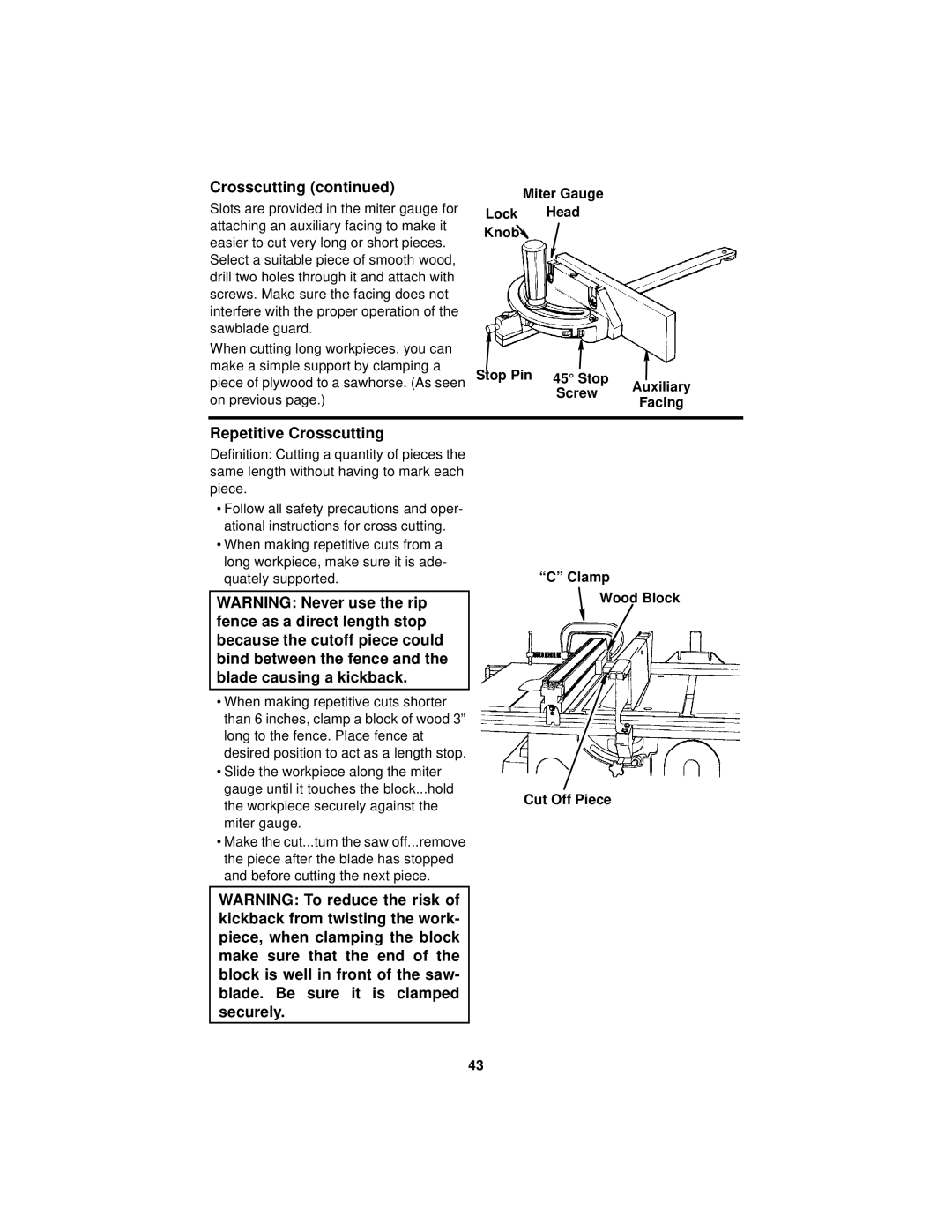
Crosscutting (continued)
Slots are provided in the miter gauge for attaching an auxiliary facing to make it easier to cut very long or short pieces. Select a suitable piece of smooth wood, drill two holes through it and attach with screws. Make sure the facing does not interfere with the proper operation of the sawblade guard.
When cutting long workpieces, you can make a simple support by clamping a piece of plywood to a sawhorse. (As seen on previous page.)
Miter Gauge
Lock Head
Knob
Stop Pin 45° Stop | Auxiliary | |
Screw | ||
Facing | ||
|
Repetitive Crosscutting
Definition: Cutting a quantity of pieces the same length without having to mark each piece.
•Follow all safety precautions and oper- ational instructions for cross cutting.
•When making repetitive cuts from a long workpiece, make sure it is ade- quately supported.
WARNING: Never use the rip fence as a direct length stop because the cutoff piece could bind between the fence and the blade causing a kickback.
•When making repetitive cuts shorter than 6 inches, clamp a block of wood 3” long to the fence. Place fence at desired position to act as a length stop.
•Slide the workpiece along the miter gauge until it touches the block...hold the workpiece securely against the miter gauge.
•Make the cut...turn the saw off...remove the piece after the blade has stopped and before cutting the next piece.
WARNING: To reduce the risk of kickback from twisting the work- piece, when clamping the block make sure that the end of the block is well in front of the saw- blade. Be sure it is clamped securely.
“C” Clamp
Wood Block
Cut Off Piece
43
